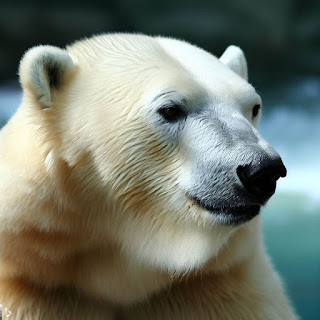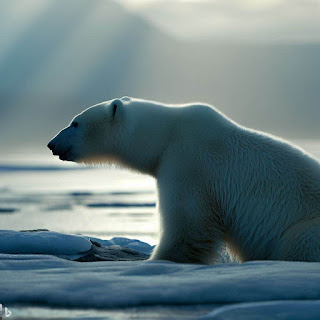Polar_Bear | Endangering -knowledgecityfree
Polar Bear living, living problems, hunting, territory, physical characteristics, Dangare, weight, length, strength, attack, precautions to avoid attack.
Polar bears are truly amazing animals, and their strength is one of their most impressive features.
polar bear:
Polar bears are apex predators that live in the Arctic. They are the largest land carnivores in the world, and they are well-adapted to their cold, icy environment.
Living:
Polar bears live on sea ice, where they hunt seals. They are excellent swimmers, and they can travel long distances between ice floes. They also spend time on land, especially when there is no sea ice. Polar bears are solitary animals, and they only come together to mate.
Living problems:
The biggest living problem for polar bears is the loss of sea ice. As the Arctic sea ice melts, polar bears have less habitat to hunt in. This is leading to problems with food availability, and it is also making it more difficult for polar bears to travel.
Hunting:
Polar bears are carnivores, and their main prey is seals. They also eat walruses, fish, and birds. Polar bears hunt seals by waiting for them to come up to breathe through holes in the ice. They also stalk seals on the ice, and they can even swim underwater to catch them.
Territory:
Polar bears have a wide range, and they can travel long distances. Their territory includes the Arctic Ocean, the surrounding seas, and the Arctic coastlines of North America, Europe, and Asia.
Physical characteristics:
Polar bears are large animals, and they can grow up to 10 feet long and weigh up to 1,500 pounds. They have thick fur that helps to keep them warm, and they have a layer of fat that insulates them from the cold. Polar bears also have large paws that help them to walk on ice, and they have sharp claws that help them to catch seals.
Their bite force: Polar bears have a bite force of 1,200 psi, which is one of the strongest bite forces of any land animal. This allows them to crush the bones of their prey.
In addition to their physical strength, polar bears are also very intelligent animals. They are able to use tools, and they are very good at problem-solving. This allows them to be successful hunters, even in difficult conditions.
Here are some examples of the strength of polar bears:
- They can run up to 25 mph.
- They can swim up to 6 mph for long distances.
- They can break through ice that is 12 inches thick.
- They can lift objects that weigh up to 1,000 pounds.
- They can bite through the skull of a seal.
Polar bears are generally not aggressive towards humans, but they can be dangerous if they feel threatened. There have been a few cases of polar bears attacking humans, but these are rare. If you are ever in the Arctic, it is important to be aware of polar bears and to take precautions to avoid an attack.
Here are some tips for avoiding a polar bear attack:
- Make noise when you are moving around, so that polar bears know you are there.
- Do not approach polar bears, and do not try to feed them.
- If you see a polar bear, back away slowly and do not make any sudden movements.
- If a polar bear charges you, try to fight back with whatever you have available.
Polar bears have specialized teeth that are adapted to their carnivorous diet. Here are the types of teeth that polar bears possess:
Incisors: Polar bears have sharp and slightly curved incisors at the front of their mouths. These teeth are used for grooming, biting, and gripping prey.
Canines: Canines are the most prominent teeth in a polar bear's mouth. They are long, strong, and pointed, and they serve as effective weapons for capturing and killing prey.
Premolars and molars: Polar bears have large premolars and molars at the back of their mouths. These teeth have a flattened and crushing surface, which helps polar bears chew on meat and bones.
The teeth of polar bears are well-suited for their primary diet of seals and other marine mammals. They are designed to catch, hold, and tear the tough hides and blubber of their prey.











Post a Comment